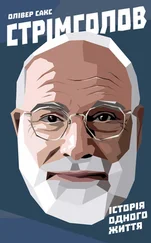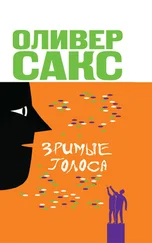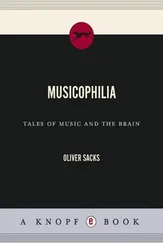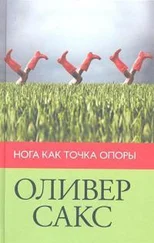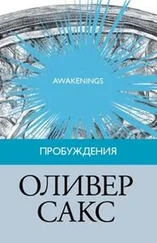Newlands, in England, was scarcely any luckier. He, too, arranged the known elements by increasing atomic weight, and seeing that every eighth element, apparently, was analogous to the first, he proposed a ‘Law of Octaves,’ saying that ‘the eighth element, starting from a given one, is a kind of repetition of the first, like the 8th note in an octave of music.’ (Had the inert gases been known at the time, it would, of course, have been every ninth element that resembled the first.) A too-literal comparison to music, and the suggestion even that these octaves might be a sort of ‘cosmic music,’ evoked a sarcastic response at the meeting of the Chemical Society at which Newlands presented his theory; it was said that he might have done as well to arrange the elements alphabetically.
There is no doubt that Newlands, even more than de Chancourtois, was very close to a periodic law. Like Mendeleev, Newlands had the courage to invert the order of certain elements when their atomic weight did not match what seemed to be their proper position in his table (though he failed to make any predictions of unknown elements, as Mendeleev did).
Lothar Meyer was also at the Karlsruhe conference and was one of the first to use the revised atomic weights published there in a periodic classification. In 1868 he came up with an elaborate sixteen-columned periodic table (but the publication of this was delayed until after Mendeleev’s table had appeared). Lothar Meyer paid special attention to the physical properties of the elements and their relation to atomic weights, and in 1870 he published a famous graph plotting the atomic weights of the known elements against their ‘atomic volumes’ (this being the ratio of atomic weight to density), a graph that showed high points for the alkali metals and low points for the dense, small-atomed metals of Group VIII (the platinum and iron metals), with all the other elements falling nicely in between. This graph proved a most potent argument for a periodic law and did much to assist the acceptance of Mendeleev’s work.
But at the time of discovering his ‘Natural System,’ Mendeleev was either ignorant of, or denied knowledge of, any attempts comparable to his own. Later, when his name and fame were established, he became more knowledgeable, perhaps more generous, less threatened by the notion of any codiscoverers or forerunners. When, in 1889, he was invited to give the Faraday Lecture in London, he paid a measured tribute to those who had come before him.
Cavendish, however, sparking the nitrogen and oxygen of air together, had observed in 1785 that a small amount (‘not more than 1⁄120th part of the whole’) was totally resistant to combination, but no one paid any attention to this until the 1890 s.
I think I identified at times with the inert gases, and at other times anthropomorphized them, imagining them lonely, cut off, yearning to bond. Was bonding, bonding with other elements, absolutely impossible for them? Might not fluorine, the most active, the most outrageous of the halogens – so eager to combine that it had defeated efforts to isolate it for more than a century – might not fluorine, if given a chance, at least bond with xenon, the heaviest of the inert gases? I pored over tables of physical constants and decided that such a combination was just, in principle, possible.
In the early 1960 s, I was overjoyed to hear (even though my mind at this time had moved on to other things) that the American chemist Neil Bartlett had managed to prepare such a compound – a triple compound of platinum, fluorine, and xenon. Xenon fluorides and xenon oxides were subsequently made.
Freeman Dyson has written to me describing his boyhood love of the periodic table and of the inert gases – he, too, saw them, in their bottles, in the Science Museum in South Kensington – and how excited he was years later when he was shown a specimen of barium xenate, seeing the elusive, unreactive gas firmly and beautifully locked up in a crystal:
For me too, the periodic table was a passion… As a boy, I stood in front of the display for hours, thinking how wonderful it was that each of these metal foils and jars of gas had its own distinct personality… One of the memorable moments of my life was when Willard Libby came to Princeton with a little jar full of crystals of barium xenate. A stable compound, looking like common salt, but much heavier. This was the magic of chemistry, to see xenon trapped into a crystal.
A spectacular anomaly came up with the hydrides of the nonmetals – an ugly bunch, about as inimical to life as one could get. Arsenic and antimony hydrides were very poisonous and smelly; silicon and phosphorus hydrides were spontane ously inflammable. I had made in my lab the hydrides of sulphur (H 2S), selenium (H 2Se), and tellurium (H 2Te), all Group VI elements, all dangerous and vile-smelling gases. The hydride of oxygen, the first Group VI element, one might predict by analogy, would be a foul-smelling, poisonous, inflammable gas, too, condensing to a nasty liquid around – 100°C. And instead it was water, H 2O – stable, potable, odorless, benign, and with a host of special, indeed unique properties (its expansion when frozen, its great heat capacity, its capacity as an ionizing solvent, etc.) which made it indispensable to our watery planet, indispensable to life itself. What made it such an anomaly? Water’s properties did not undermine for me the placement of oxygen in the periodic table, but made me intensely curious as to why it was so different from its analogs. (This question, I found, had only been resolved recently, in the 1930 s, with Linus Pauling’s delineation of the hydrogen bond.)
Ida Tacke Noddack was one of a team of German scientists who found element 75, rhenium, in 1925-26. Noddack also claimed to have found element 43, which she called masurium. But this claim could not be supported, and she was discredited. In 1934, when Fermi shot neutrons at uranium and thought he had made element 93, Noddack suggested that he was wrong, that he had in fact split the atom. But since she had been discredited with element 43, no one paid any attention to her. Had she been listened to, Germany would probably have had the atomic bomb and the history of the world would have been different. (This story was told by Glenn Seaborg when he was presenting his recollections at a conference in November 1997.)
Although elements 93 and 94, neptunium and plutonium, were created in 1940, their existence was not made public until after the war. They were given provisional names, when they were first made, of ‘extremium’ and ‘ultimium,’ because it was thought impossible that any heavier elements would ever be made. Elements 95 and 96, however, were created in 1944. Their discovery was not made public in the usual way – in a letter to Nature , or at a meeting of the Chemical Society – but during a children’s radio quiz show in November 1945, during which a twelve-year-old boy asked, ‘Mr. Seaborg, have you made any more elements lately?’
Auguste Comte had written, in his 1835 Cours de la Philosophie Positive :
On the subject of the stars, all investigations which are not ultimately reducible to simple visual observations are… necessarily denied to us. While we can conceive of the possibility of determining their shapes, their sizes, and their motions, we shall never be able by any means to study their chemical composition or mineralogical content.
Uncle Abe told me something of the history of matches, how the first matches had to be dipped into sulphuric acid to light them before ‘lucifers’ – friction matches – were introduced in the 1830 s, and how this led to a huge demand for white phosphorus over the next century. He told me of the awful conditions under which match girls worked in the factories and of the terrible disease, ‘phossy-jaw,’ they often got, until the use of white phosphorus was banned in 1906. (Only red phosphorus, far more stable, and far safer, was subsequently used.)
Читать дальше

